Time-Average Heat Transfer Coefficient for Steam-Air Condensation during the Dropping of Containment Pressure
Abstract
1. Introduction
2. Experimental Facility
2.1. Details of the Facility
2.2. Experimental Procedures and Conditions
3. Results and Discussion
3.1. Time-Average Condensation Heat Transfer Coefficient
3.2. Time-Average Condensation HTC vs. Various Conditions
3.3. The Empirical Correlation
3.4. Self-Sustaining Stability
4. Conclusions
- (1)
- Time-average condensation HTC is defined to quantitatively characterize heat transfer intensity during the whole transient running of PCCS. Moreover, a detailed empirical correlation for the time-average condensation HTC is developed. The equation matches experimental data well with a fitting error of ±20%.
- (2)
- The more considerable initial gas mixture pressure and smaller air mass fraction can enhance the transient heat transfer. Moreover, the time-average HTC is more closely related to the initial air mass fraction. Thus, a simplified empirical correlation that only includes air mass fraction is also proposed to roughly predict the transient heat transfer.
- (3)
- PCCS has good self-sustaining stability. When an interference occurs during the long-term operation of PCCS, PCCS responds quickly and reruns to the new steady state.
Author Contributions
Funding
Data Availability Statement
Conflicts of Interest
Nomenclature
| Abbreviations | |
| HTC | Heat transfer coefficient |
| General notation | |
| A | Heat transfer area, m2 |
| d | Diameter of heat transfer tube, m |
| h | Heat transfer coefficient, W·m−2·K−1 |
| K | Correction factor,/ |
| L | Tube length, m |
| P | Pressure, MPa |
| q | Heat transfer rate, W |
| Q | Energy, J |
| T | Temperature, K |
| V | Containment volume, m3 |
| W | Mass fraction,/ |
| Mass density, kg·m−3 | |
| Time, s | |
| End moment, s | |
| Start moment, s | |
| Wall subcooling, K | |
| Subscripts | |
| a | Air |
| b | Containment bulk |
| c | Cooling water |
| i | Each moment |
| s | Steam |
| sta | Standard atmospheric |
| t | Total |
| w | Heat transfer tube wall |
| 0 | Initial moment |
References
- Bakhmet’Ev, A.M.; Bol’Shukhin, M.A.; Vakhrushev, V.V.; Khizbullin, A.M.; Makarov, O.V.; Bezlepkin, V.V.; Semashko, S.E.; Ivkov, I.M. Experimental validation of the cooling loop for a passive system for removing heat from the AES-2006 protective envelope design for the Leningradskaya nuclear power plant site. Sov. At. Energy 2009, 106, 185–190. [Google Scholar] [CrossRef]
- Lim, S.G.; No, H.C.; Lee, S.W.; Kim, H.G.; Cheon, J.; Lee, J.M.; Ohk, S.M. Development of stability maps for flashing-induced instability in a passive containment cooling system for iPOWER. Nucl. Eng. Technol. 2019, 52, 37–50. [Google Scholar] [CrossRef]
- Xing, J.; Song, D.; Wu, Y. HPR1000: Advanced Pressurized Water Reactor with Active and Passive Safety. Engineering 2016, 2, 79–87. [Google Scholar] [CrossRef]
- Hung, Z.-Y.; Ferng, Y.-M.; Hsu, W.-S.; Pei, B.-S.; Chen, Y.-S. Analysis of AP1000 containment passive cooling system during a loss-of-coolant accident. Ann. Nucl. Energy 2015, 85, 717–724. [Google Scholar] [CrossRef]
- Lee, S.W.; Heo, S.; Ha, H.U.; Kim, H.G. The concept of the innovative power reactor. Nucl. Eng. Technol. 2017, 49, 1431–1441. [Google Scholar] [CrossRef]
- Kim, J.W.; Lee, Y.G.; Ahn, H.K.; Park, G.C. Condensation heat transfer characteristic in the presence of non-condensable gas on natural convection at high pressure. Nucl. Eng. Des. 2009, 239, 688–698. [Google Scholar] [CrossRef]
- Lee, Y.-G.; Jang, Y.-J.; Choi, D.-J. An experimental study of air–steam condensation on the exterior surface of a vertical tube under natural convection conditions. Int. J. Heat Mass Transf. 2017, 104, 1034–1047. [Google Scholar] [CrossRef]
- Fan, G.; Tong, P.; Sun, Z.; Chen, Y. Development of a new empirical correlation for steam condensation rates in the presence of air external vertical smooth tube. Ann. Nucl. Energy 2018, 113, 139–146. [Google Scholar] [CrossRef]
- Su, J.; Sun, Z.; Fan, G.; Ding, M. Experimental study of the effect of non-condensable gases on steam condensation over a vertical tube external surface. Nucl. Eng. Des. 2013, 262, 201–208. [Google Scholar] [CrossRef]
- Bian, H.; Sun, Z.; Zhang, N.; Meng, Z.; Ding, M. Numerical investigations on steam condensation in the presence of air on external surfaces of 3 × 3 tube bundles. Prog. Nucl. Energy 2018, 111, 42–50. [Google Scholar] [CrossRef]
- Bian, H.; Sun, Z.; Ding, M.; Zhang, N. Local phenomena analysis of steam condensation in the presence of air. Prog. Nucl. Energy 2017, 101, 188–198. [Google Scholar] [CrossRef]
- Liu, H.; Todreas, N.; Driscoll, M. An experimental investigation of a passive cooling unit for nuclear plant containment. Nucl. Eng. Des. 2000, 199, 243–255. [Google Scholar] [CrossRef]
- Kawakubo, M.; Aritomi, M.; Kikura, H.; Komeno, T. An experimental study on the cooling characteristics of passive containment cooling systems. J. Nucl. Sci. Technol. 2009, 46, 339–345. [Google Scholar] [CrossRef]
- Hui, K.; Chen, W.; Li, S.; Zhao, Q.; Yan, J. Experimental study on transient thermal–hydraulic characteristics of an open natural circulation for the passive containment cooling system. Int. J. Heat Mass Trans. 2021, 179, 121680. [Google Scholar] [CrossRef]
- Kyung, I.S.; Lee, S.Y. Periodic flow excursion in an open two-phase natural circulation loop. Nucl. Eng. Des. 1996, 162, 233–244. [Google Scholar] [CrossRef]
- Shi, S.; Schlegel, P.J.; Brooks, C.S. Experimental investigation of natural circulation instability in a BWR-type small modular reactor. Prog. Nucl. Energy 2015, 85, 96–107. [Google Scholar] [CrossRef]
- Yang, S.-K. Stability of flashing-driven natural circulation in a passive moderator cooling system for Canadian SCWR. Nucl. Eng. Des. 2014, 276, 259–276. [Google Scholar] [CrossRef]
- Guo, X.; Sun, Z.; Wang, J.; Yu, S.; Gao, L. Numerical simulation of the transient behaviors in an open natural circulation system with a large scale. Ann. Nucl. Energy 2015, 77, 83–93. [Google Scholar] [CrossRef]
- Guo, X.; Sun, Z.; Wang, J. Experimental study on start-up characteristics of open natural circulation system. Nucl. Tech. 2014, 37, 69–74. [Google Scholar]
- Hou, X.; Sun, Z.; Fan, G. Experimental investigation of start-up characteristics in open natural circulation system. At. Energy Sci. Technol. 2015, 49, 6. [Google Scholar]
- Hou, X.; Sun, Z.; Sun, Q. Experimental study on geysering in an open natural circulation system. J. Harbin Eng. Univ. 2016, 37, 6. [Google Scholar]
- Bae, B.-U.; Kim, S.; Park, Y.-S.; Kang, K.-H. Experimental investigation on condensation heat transfer for bundle tube heat exchanger of the PCCS (Passive Containment Cooling System). Ann. Nucl. Energy 2019, 139, 107285. [Google Scholar] [CrossRef]
- Moffat, R.J. Contributions to the theory of single-sample uncertainty analysis. J. Fluid Eng. 1982, 104, 250–260. [Google Scholar] [CrossRef]
- Yang, X.; Feng, Y.; Zhang, X. Average heat transfer coefficient for transient flow in aluminum foam-filled channels. Industrial heating. 2010, 39, 23–26. [Google Scholar]
- Bian, H.; Lu, Y.; Li, C.; Liang, T.; Ding, M. Comprehensive parameter analyses on steam-air condensation at pressures up to 1.6 MPa. Nucl. Eng. Des. 2021, 385, 111536. [Google Scholar] [CrossRef]
- Dehbi, A.A. Generalized correlation for steam condensation rates in the presence of air under turbulent free convection. Int. J. Heat Mass Transf. 2015, 86, 1–15. [Google Scholar] [CrossRef]
- Uchida, H.; Oyama, A.; Togo, Y. Evaluation of post-incident cooling systems of light-water power reactors. In Proceedings of the 3rd International Conference on Peaceful Uses of Atomic Energy, Geneva, Switzerland, 31 August–9 September 1964; pp. 93–102. [Google Scholar]
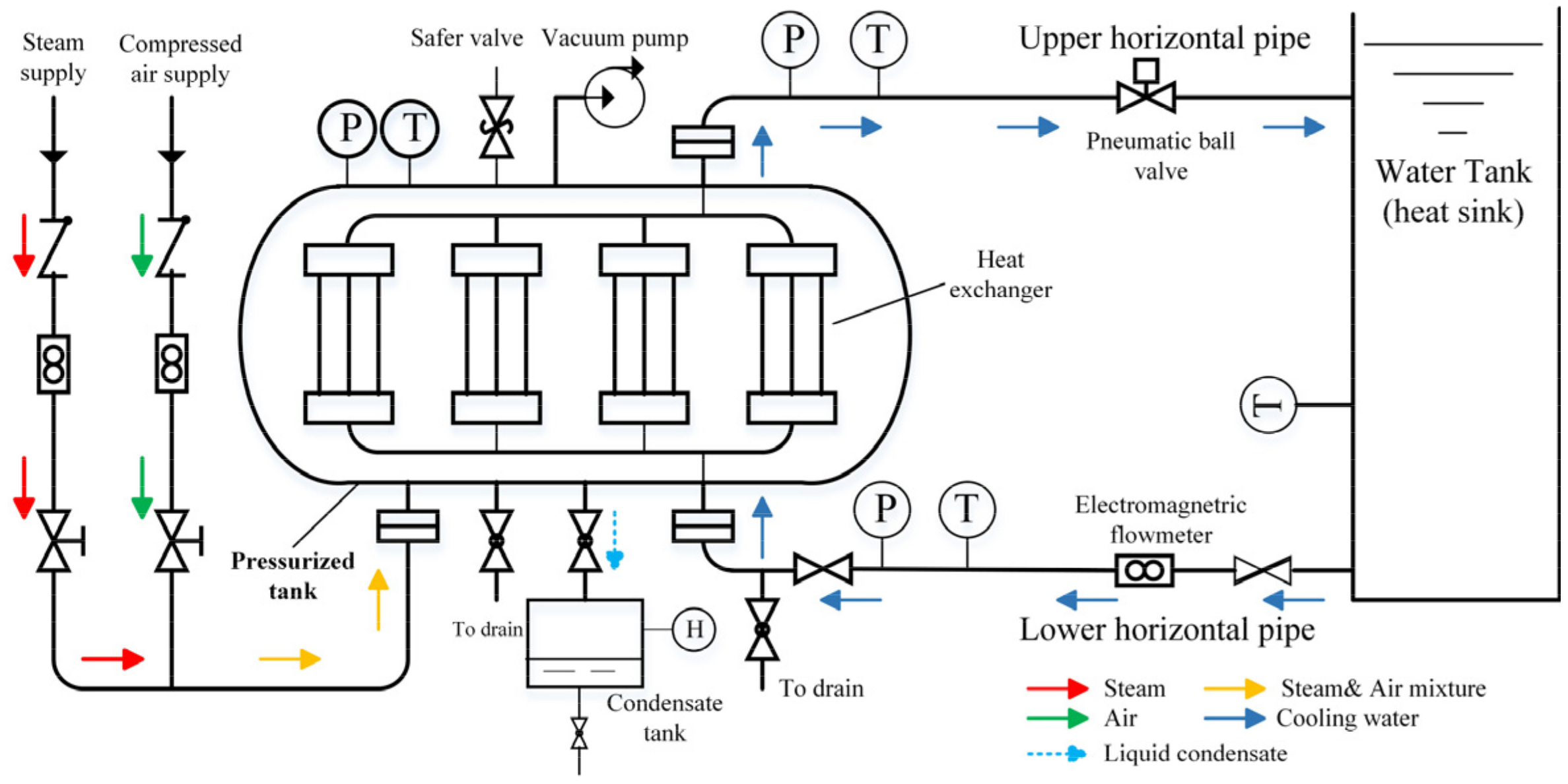
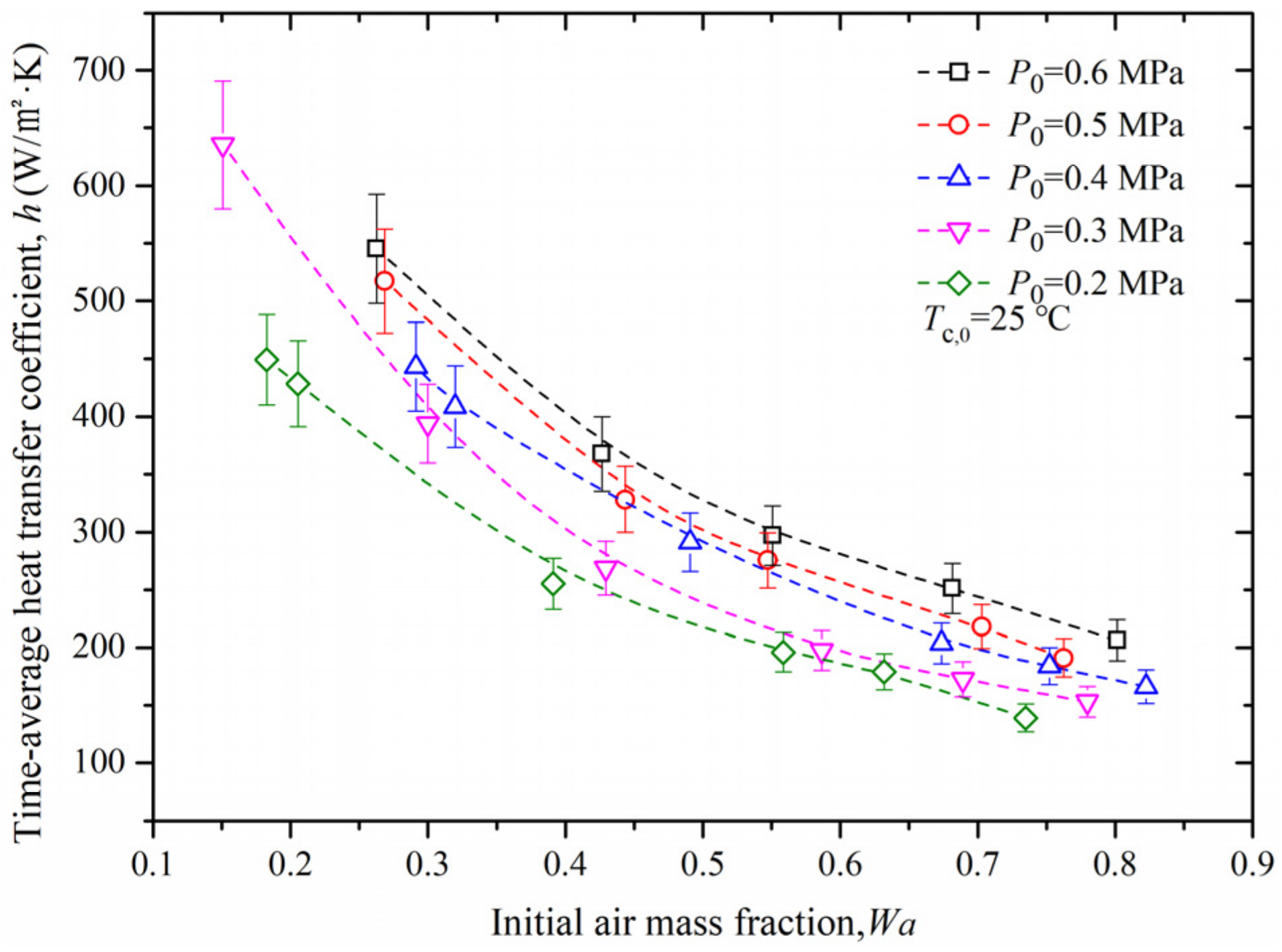
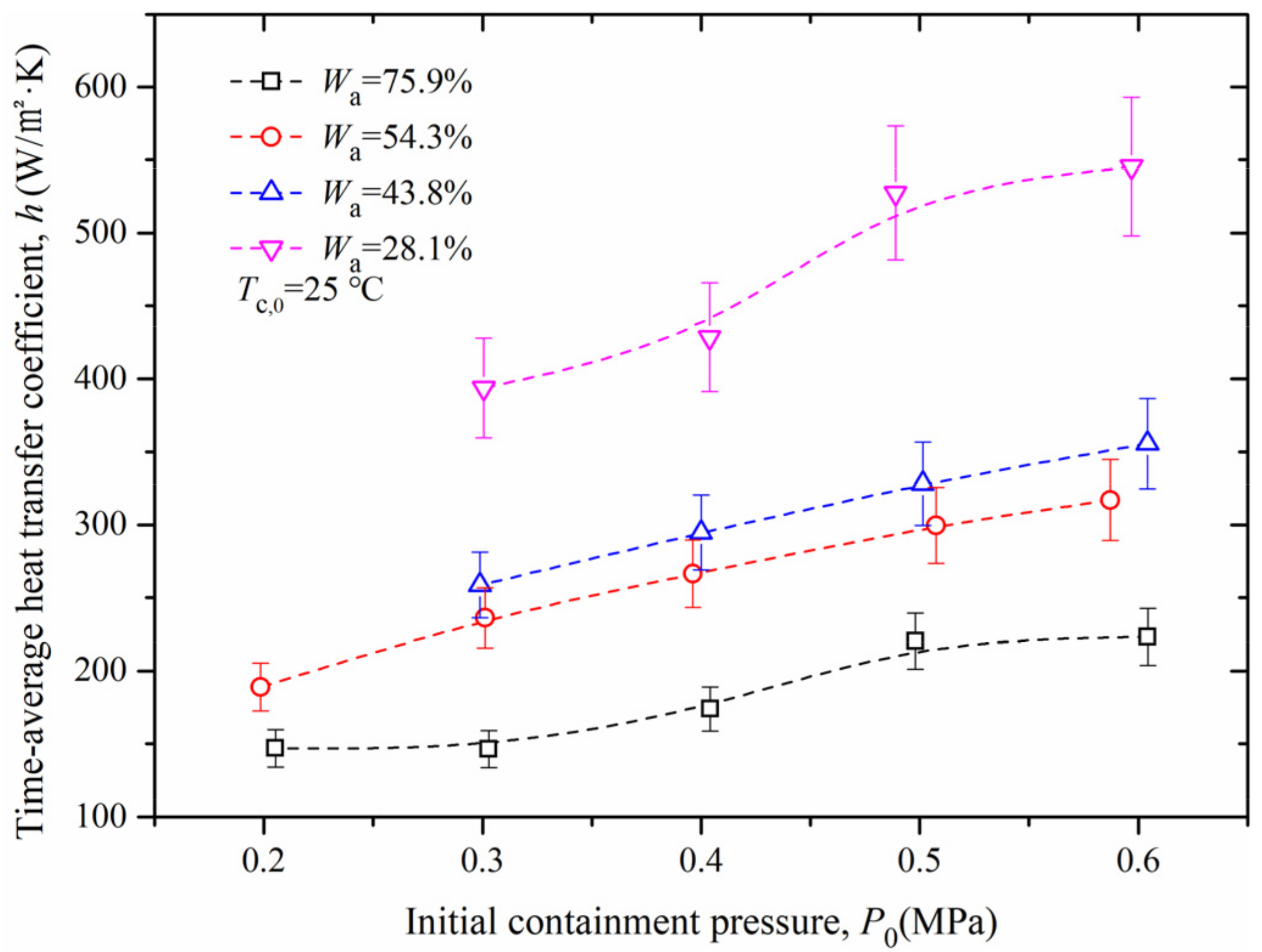
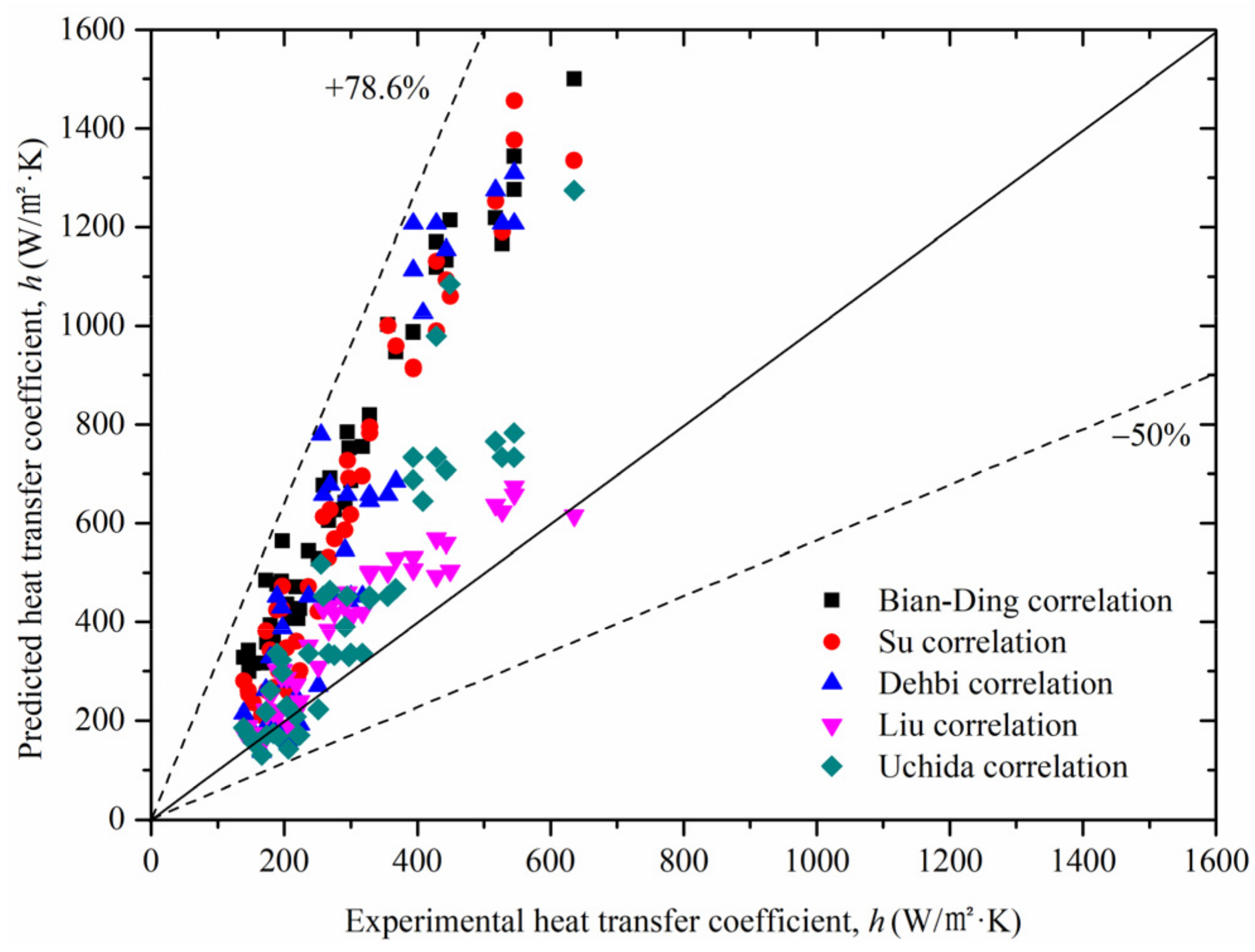

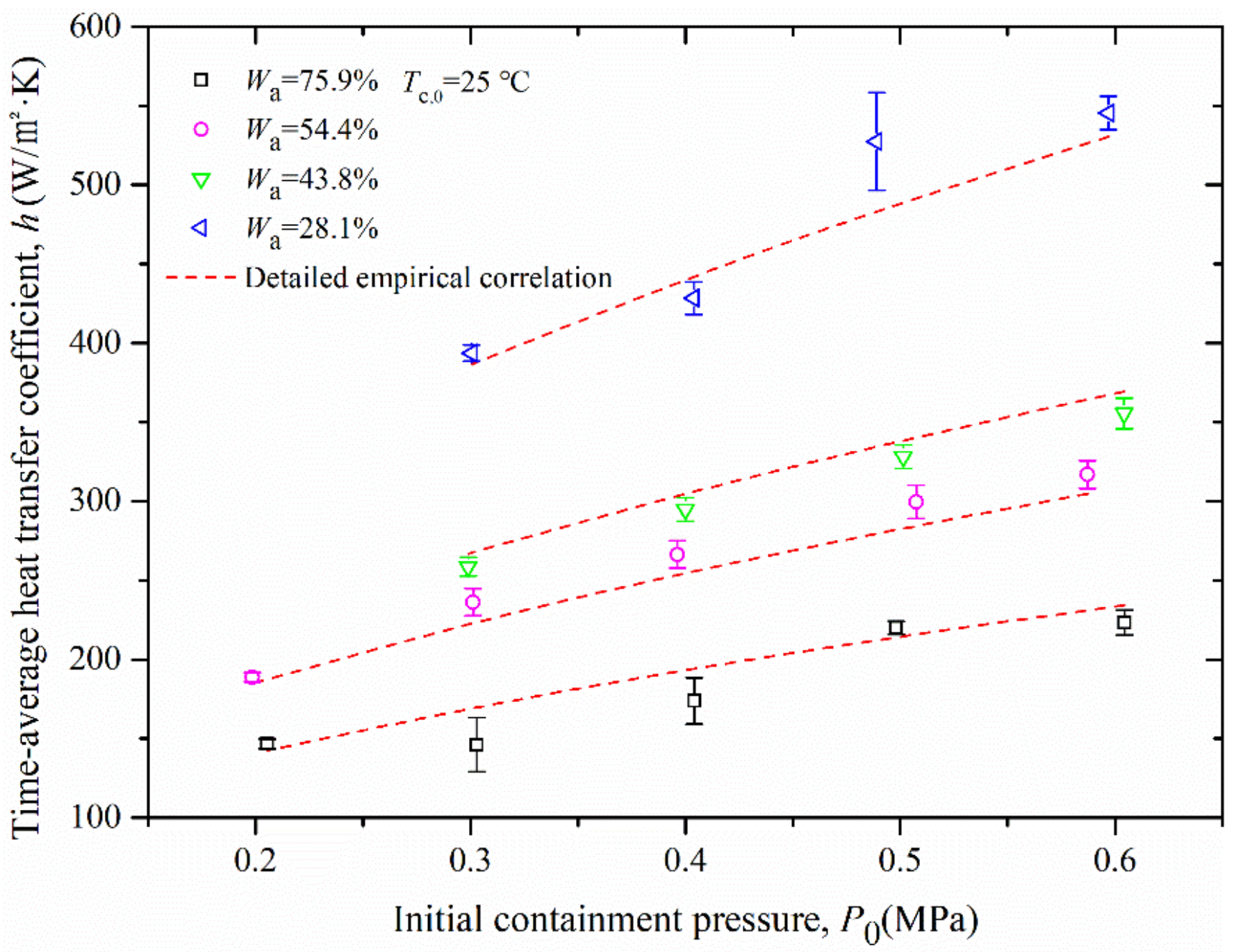
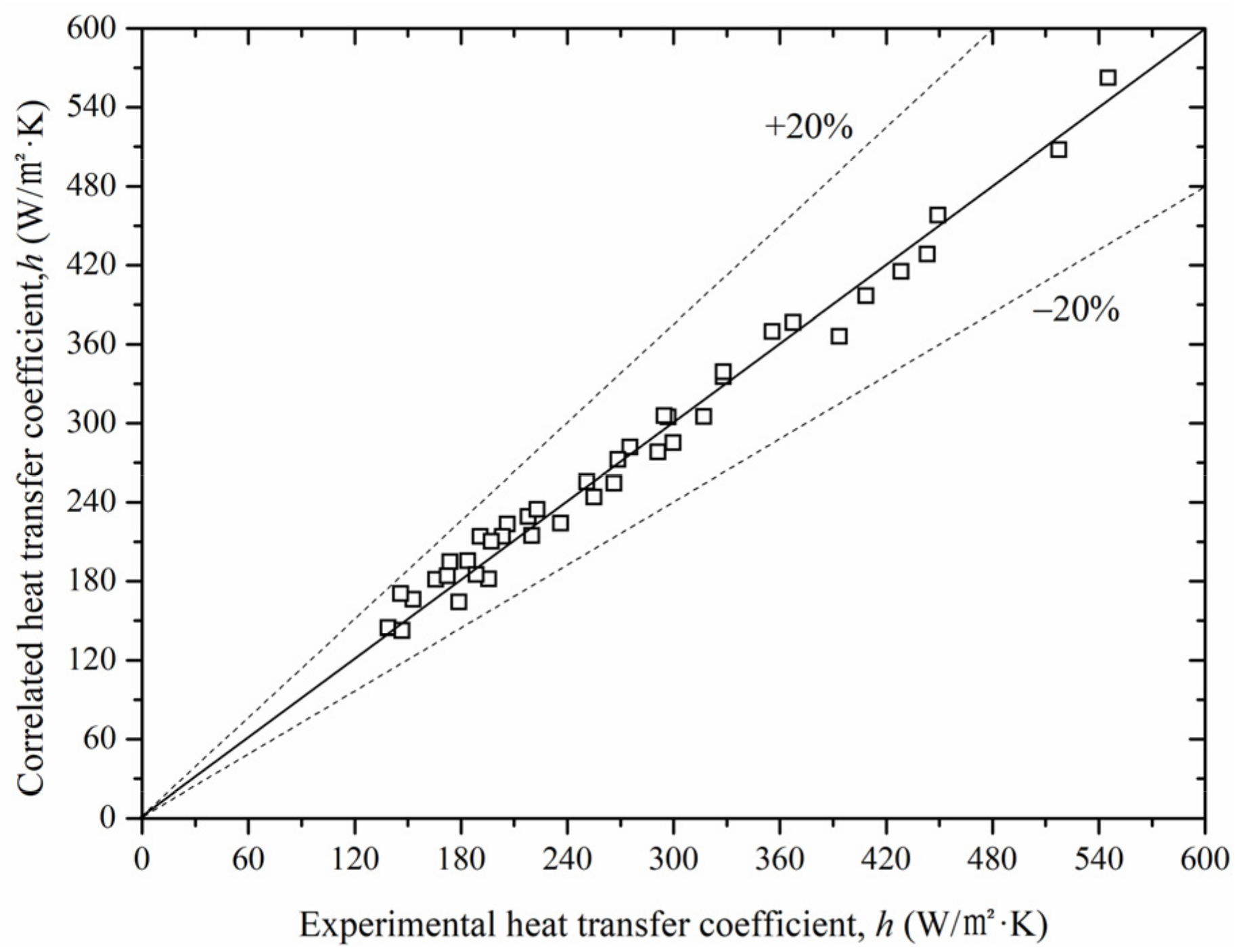
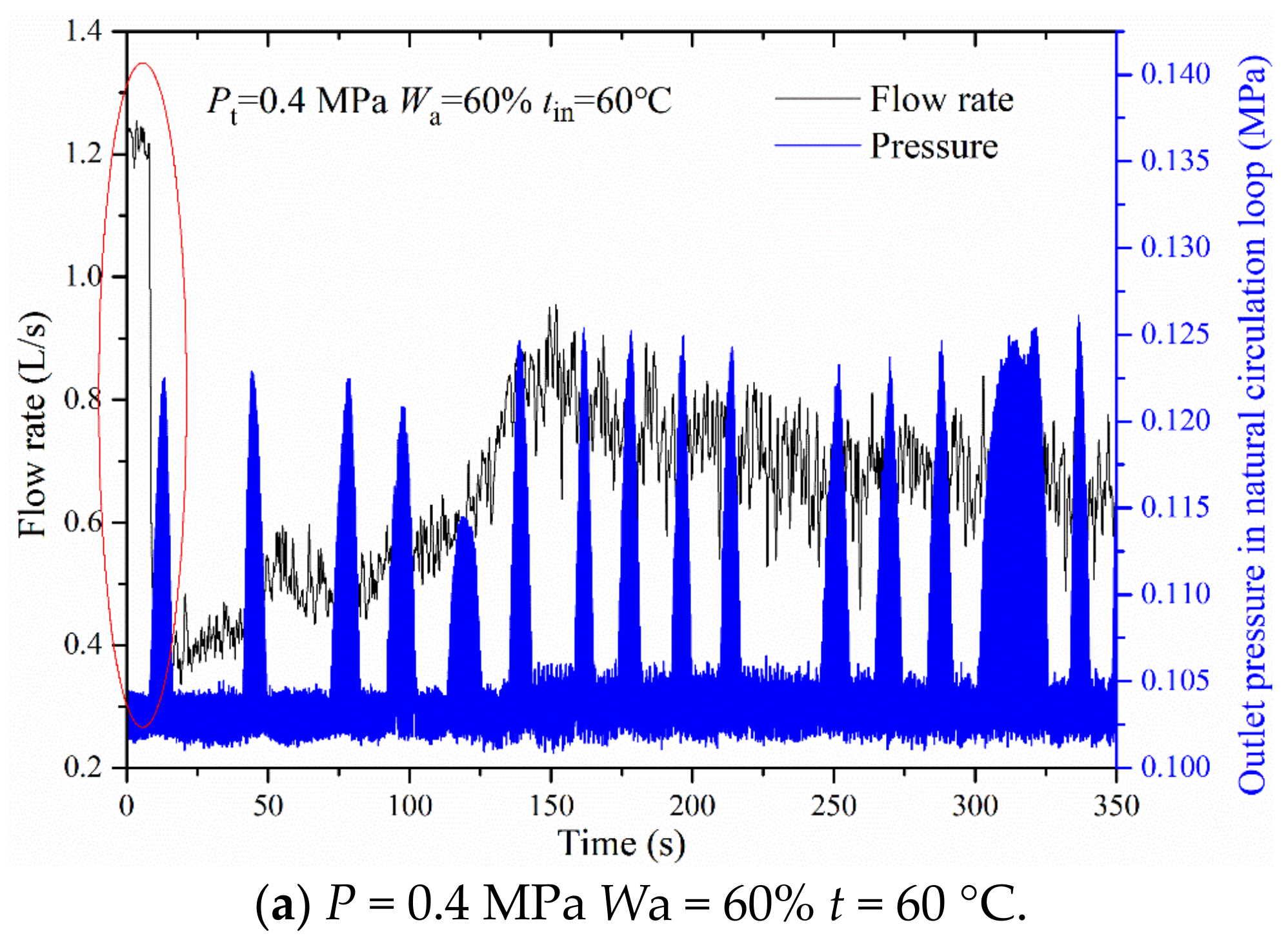
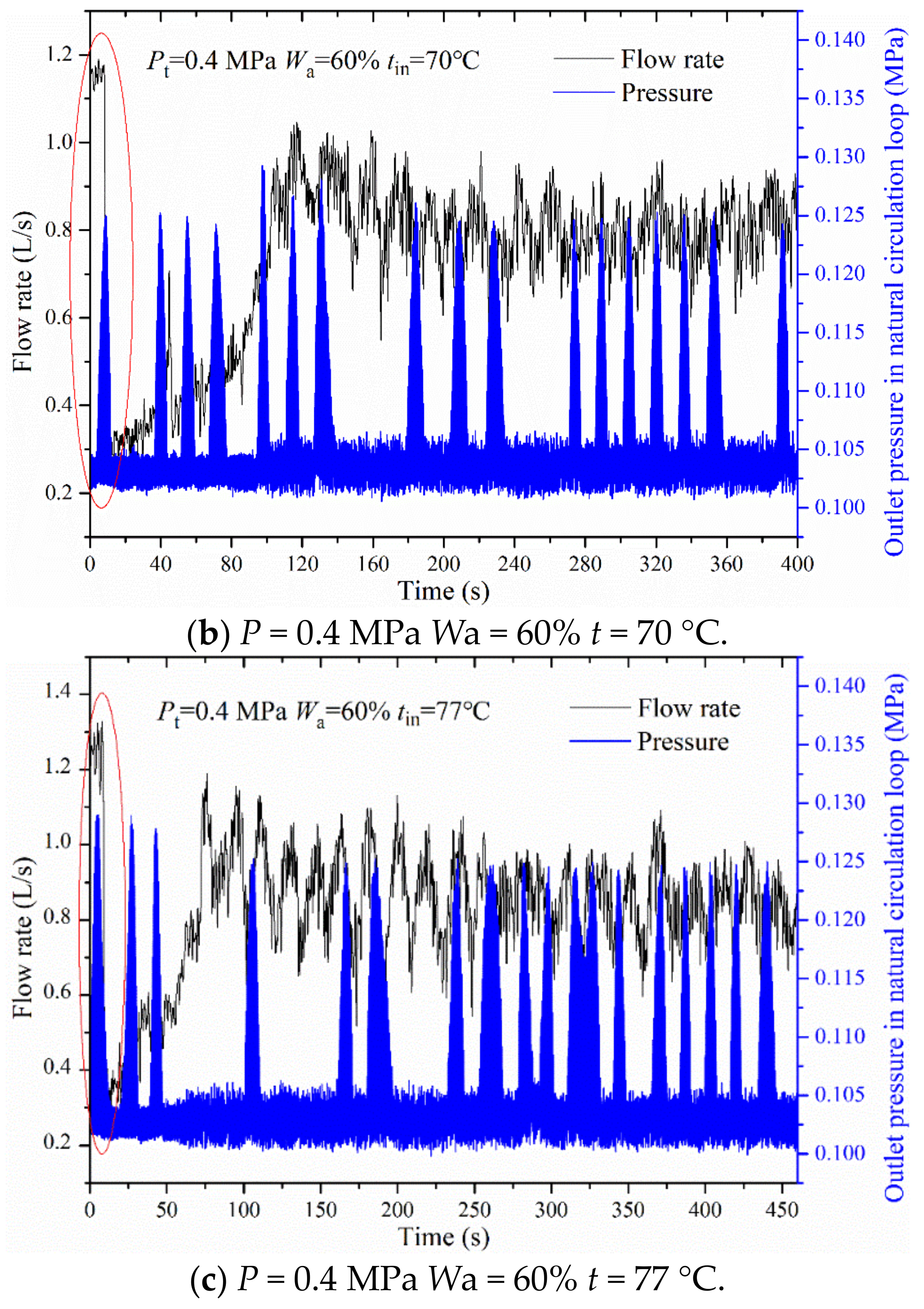
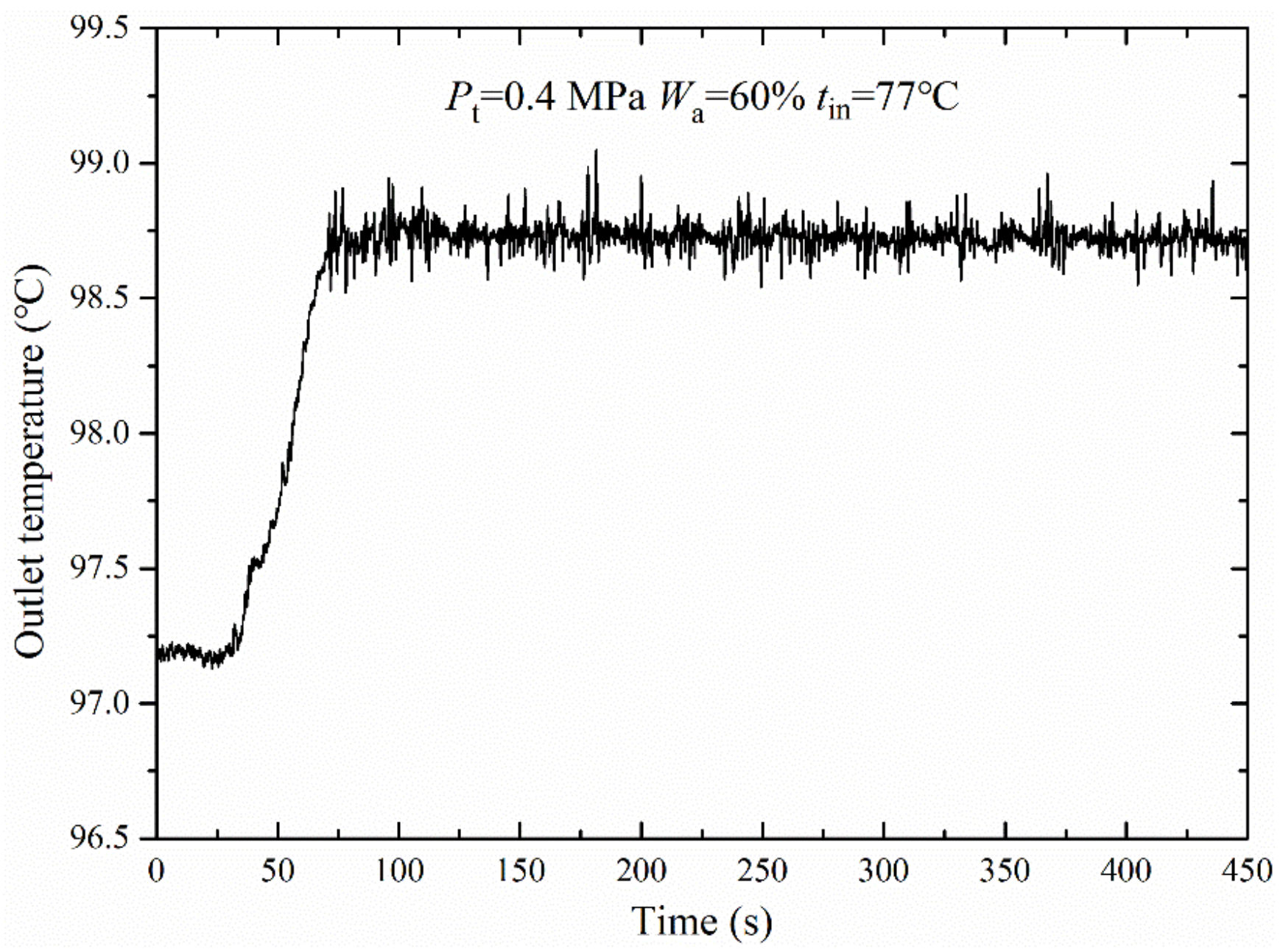
| Parameter. | Value |
|---|---|
| Containment pressure, MPa | 0.2–0.6 |
| Air mass fraction | 15.1–82.3% |
| Coolant water temperature, °C | 25, 60, 70, 77 |
Publisher’s Note: MDPI stays neutral with regard to jurisdictional claims in published maps and institutional affiliations. |
© 2022 by the authors. Licensee MDPI, Basel, Switzerland. This article is an open access article distributed under the terms and conditions of the Creative Commons Attribution (CC BY) license (https://creativecommons.org/licenses/by/4.0/).
Share and Cite
Li, S.; Hui, K.; Ke, Z.; Li, Y. Time-Average Heat Transfer Coefficient for Steam-Air Condensation during the Dropping of Containment Pressure. Energies 2022, 15, 9034. https://doi.org/10.3390/en15239034
Li S, Hui K, Ke Z, Li Y. Time-Average Heat Transfer Coefficient for Steam-Air Condensation during the Dropping of Containment Pressure. Energies. 2022; 15(23):9034. https://doi.org/10.3390/en15239034
Chicago/Turabian StyleLi, Shaodan, Kai Hui, Zhiwu Ke, and Yong Li. 2022. "Time-Average Heat Transfer Coefficient for Steam-Air Condensation during the Dropping of Containment Pressure" Energies 15, no. 23: 9034. https://doi.org/10.3390/en15239034
APA StyleLi, S., Hui, K., Ke, Z., & Li, Y. (2022). Time-Average Heat Transfer Coefficient for Steam-Air Condensation during the Dropping of Containment Pressure. Energies, 15(23), 9034. https://doi.org/10.3390/en15239034





